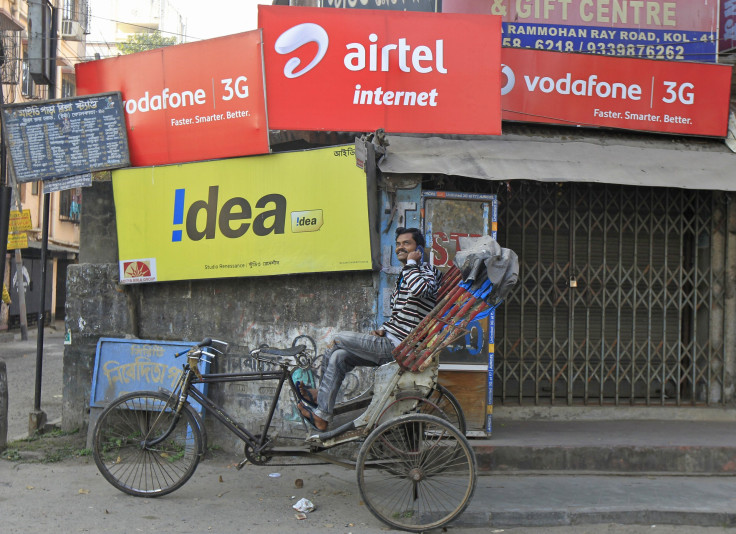India’s Record Spectrum Auction Heralds 4G Era In World's Third-Largest Smartphone Market

Despite loud grumblings by the carriers about high prices, India’s recent wireless spectrum auction has set the stage for a new wave of data services in the world’s third-biggest and fastest-growing smartphone market. The downside: Consumers on the subcontinent could see their mobile bills rise as much as 15 percent as network operators look to recoup auction costs.
Carriers are likely to expand 3G coverage into rural areas, which could pave the way for valuable services over the air -- from real-time weather updates to doctors’ consultations and virtual teachers where there were none before.
Much of the monthlong auction, which ended March 25, was about renewing 20-year licenses that would soon expire, allowing carriers the right to continue to use spectrum in bands such as the 900MHz and 1800MHz. Some new spectrum also was on offer, in the 2.1GHz band, which could help boost 3G services.
“I saw the focus [in the auction] definitely on the data services and the whole ecosystem is moving that way,” Rishi Tejpal, a principal research analyst at Gartner Inc. told International Business Times. India’s top carriers all garnered licenses that would allow them to build out their 3G networks farther and expand into rural areas, he said.
That would set the stage for moving into 4G. “We expect 4G coverage to accelerate following the auction,” said Julian Watson, a director at London-based consultancy IHS Global Ltd., who tracks carriers. “We will also see increased 3G deployment from Vodafone, which now owns 2.1GHz spectrum.”
Watson expects the auction to have strengthened Bharti Airtel Ltd., India’s top wireless provider, Vodafone Group PLC, and no. 3 player Idea Cellular Ltd. Together they’ve committed to spending $13.6 billion on the licenses they’ve won.
The expansion makes sense for the top carriers, with their countrywide networks. About 70 percent of India lives in villages, and the federal government is committed to bringing broadband connectivity to them and is itself spending some $5 billion to $6 billion on a fiber optic network that commercial service providers will also be allowed to use.
By last count, at the end of January, India had 952 million wireless subscribers. Over 95 percent of them are on prepaid plans and are very price sensitive. Further, only about 150 million mobile subscribers in India today have smartphones, making the country one of the fastest growing major markets for such handsets.
As 3G networks become more widespread and robust, and smartphones supporting 3G -- already available for less than 3,000 rupees ($50) -- more affordable, even prepaid customers are likely to access the Internet more by paying a bit extra for data.
Smartphone makers such as China’s Xiaomi Inc. and Lenovo Group Ltd., and India’s Micromax Informatics Ltd. are competing to release ever-more-affordable 4G smartphones, which today cost around $110. That 4G phones will be available in India at half that price in the not too distant future is a certainty.
Against an expectation of 820 billion rupees, based on the minimum bid prices set by the federal government, the dogfight that ensued for bands that were the most sought after, such as 900 MHz, returned a record final number of 1.09 trillion rupees ($17.4 billion).
Observers say India’s carriers may look to recoup some of that outlay by charging more for their services. “While the costs of the industry are massive,” the average revenue per user (per month), or ARPU, of Indian telecom service providers is $2.96, compared with the international average of $35 to $40, Cellular Operators Association of India, the country’s main telecom lobby, said in a statement on Tuesday.
“The industry’s analysis of the financial implications of the auction indicates an increase of more than 12 percent to 15 percent on the present tariffs, to make up for the cash outflows of the operators,” the lobby said in the statement. Some of the top operators have taken the government to court over the auction prices and the country’s top court is expected to hear the matter next on April 16. The court has allowed the federal government to finalize the auction results subject to its final decision.
The government has argued that the auction has been highly successful and the end prices will not be a burden for the operators. The carriers also have the option of stretching out paying 75 percent of their final bid amount over 10 years starting 2017, after paying the first 25 percent upfront.
© Copyright IBTimes 2024. All rights reserved.






















